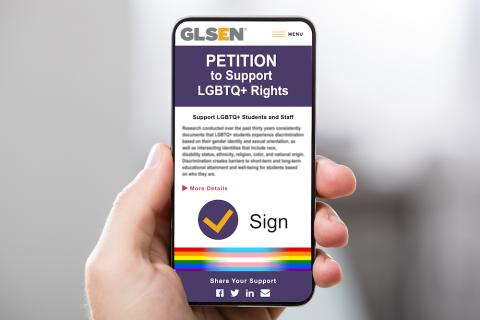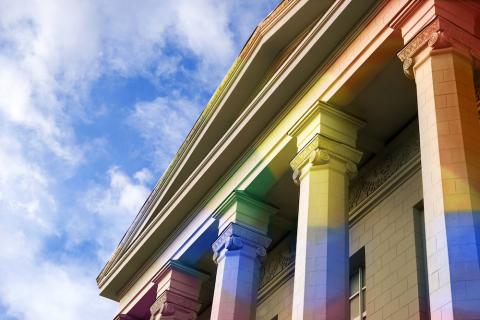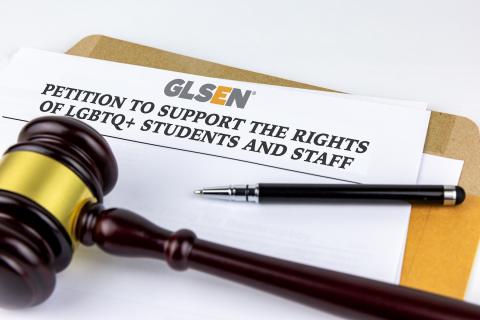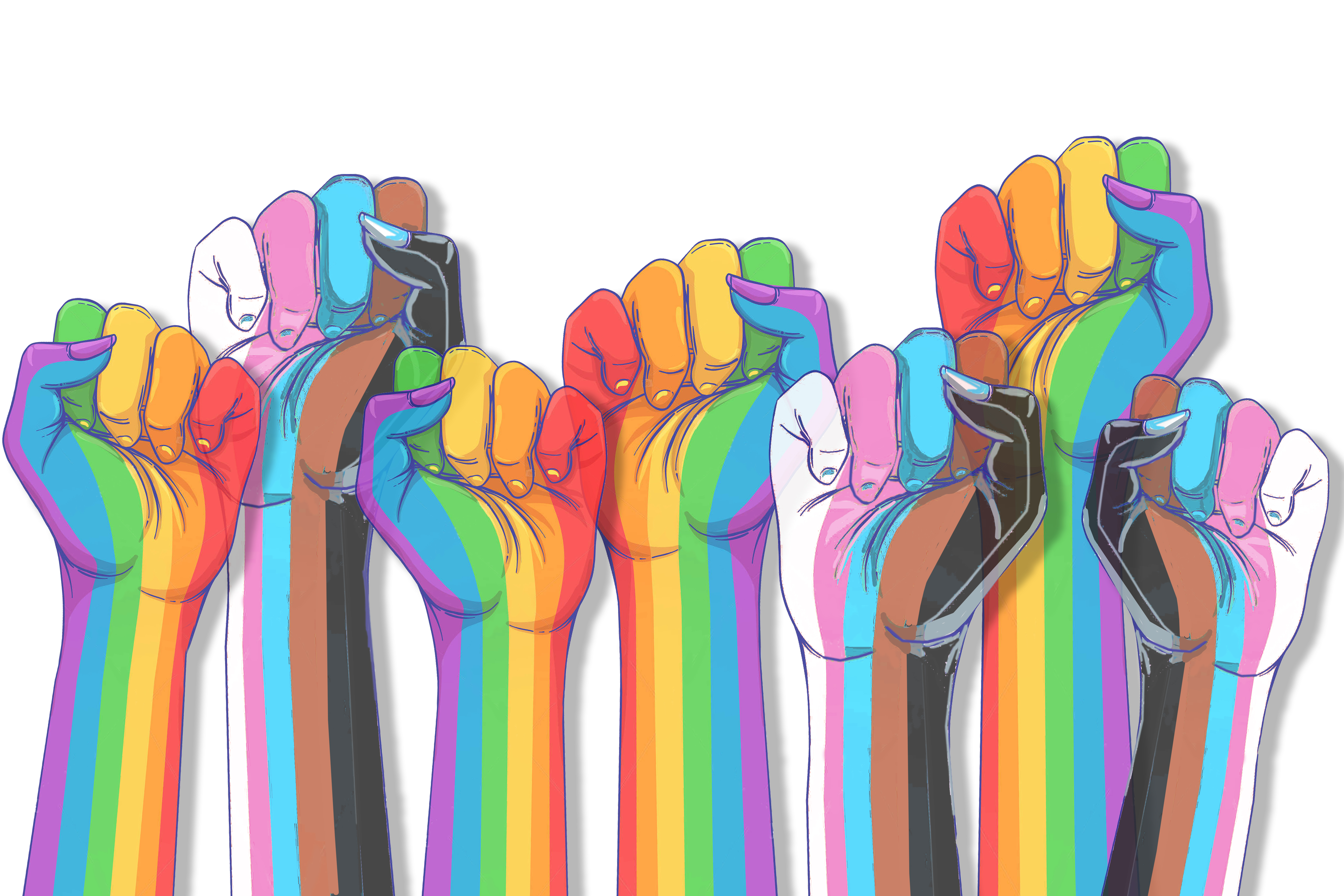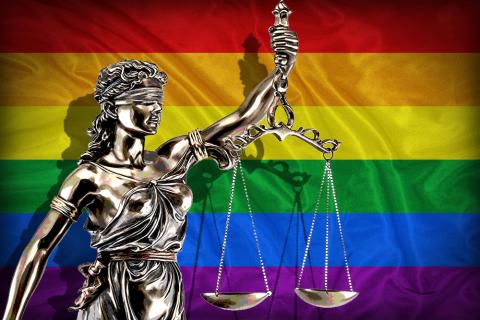
Sign Our Civil Rights Open Letter for LGBTQ+ Students and Staff - GLSEN
Hold the Line for LGBTQ+ Students, Educators, and School Staff
Make Sure All Schools Understand Their Responsibility Under Federal Law.
The Supreme Court has made it crystal clear that today LGBTQ+ people are protected from discrimination by federal law.
We must reinvigorate our efforts to ensure that K-12 schools everywhere understand their responsibility to protect LGBTQ+ students, educators, and school staff from discrimination, and to advocate for equity and inclusion and fair treatment in all aspects of school life. We need to make sure education leaders everywhere understand their obligations to uphold the civil rights of all students, that all of our schools understand that we stand behind all the LGBTQ+ members of their communities.
We need you to remember the power of your voice and add your name to this national call to action too!
GLSEN will deliver this letter and signatories to federal, state, and local decision makers across the country, including newly elected and appointed officials.
Review these links for more information: Organization Sign on Letter | Press Release. Please read the letter and fill out the sign on form below to add your name to stand in solidarity with LGBTQ+ students and educators.

This summer, the U.S. Supreme Court ruled in Bostock v. Clayton County, Georgia and two other cases that discrimination against LGBTQ+ people "necessarily entails discrimination based on sex; the first cannot happen without the second.”[1] This decision affirmed what many civil rights and education advocates have long known: discrimination against people on the basis of sexual orientation and gender identity has been and still is prohibited under federal civil rights law.
This landmark decision from the Court is a powerful tool for changing education environments, both at K-12 schools and in higher education, for the better by removing those barriers that are impeding LGBTQ+ students and educators -- especially those who are also people of color -- from being safe and affirmed in schools and college campuses across the country.
Historically, federal, state, and local policies have required or allowed for discrimination against LGBTQ+ students, educators, faculty, and staff, and created environments where they are not safe to learn or safe to work. When students are not safe at school, they are denied an education; and when educators do not feel safe at school, they cannot do their jobs.
Research conducted over the past thirty years consistently documents that LGBTQ+ students experience discrimination based on their gender identity and sexual orientation, as well as intersecting identities that include race, disability, ethnicity, religion, color, and national origin. Discrimination creates barriers to short-term and long-term educational attainment and well-being for students based on who they are.
- Disciplined for public displays of affection that were not disciplined among non-LGBTQ+ students: 31.3 percent.
- Prevented from wearing clothes considered “inappropriate” based on their gender identity: 22.6 percent.
- Prohibited from discussing or writing about LGBTQ+ topics in school assignments: 18.2 percent.
- Prohibited from including LGBTQ+ topics in school extracurricular activities (for example, in school publications including yearbook or newspaper, and in events such as the annual Day of Silence).
- Prevented from promoting GSAs (Gender Sexuality Alliances or Gay Straight Alliances): 17.6 percent.[2]
These experiences do not end when students graduate from high school but continue in higher education. The vast majority (65 percent) of undergraduate transgender and gender nonconforming students have reported experiencing harassment at their institution.[3] LGBTQ+ students experience uninviting college campuses that, in turn, can have a great negative impact on their personal academic success, a reality that this ruling has the potential to change.[4] According to the research literature, faculty can impact a student’s perceptions of the campus climate including negative classroom experiences that make them feel invisible and silenced;[5] a negative campus climate for LGBTQ+ students could also impact those students’ social networks and overall satisfaction with their college experience.[6]
LGBTQ+ teachers are more likely to engage in LGBTQ+-affirming and supportive teaching practices than teachers who are not LGBTQ+ (74.5 percent of LGBTQ+ teachers vs 49.0 percent of non-LGBTQ+ teachers).[7] However, when educators experience discrimination and do not feel safe at school themselves, it is less likely they will be able to support students in these ways. LGBTQ+ teachers were more likely than non-LGBTQ+ teachers to report experiencing backlash from administrators, parents, and communities. Over 1 in 10 LGBTQ+ teachers (11.1 percent) said that engaging in LGBTQ+-affirming and supportive teaching practices could jeopardize their employment.
In this moment of increased awareness of systemic racist police violence and the COVID-19 pandemic with its racially disproportionate harms, fairness and equal opportunity for students in K-12 schools and institutions of higher education should take on a new urgency. All civil rights and education advocates should highlight the opportunity that the Supreme Court's italicize Bostock decision represents to spur positive changes in policies and practices that will benefit LGBTQ+ students in both K-12 schools and institutions of higher education. The positive changes will especially benefit students who are multi-marginalized.
We urge all students, educators, and families to rally in community to advance inclusive and welcoming environments in all schools that celebrate and affirm LGBTQ+ students and staff.
This is both a moral imperative and a legal necessity. Learning environments should be places of liberation, where every educator can teach and every student can thrive and reach their full potential, regardless of their sexual orientation, gender identity, race, sex, religion, language, disability, immigration, or economic status.
Sincerely,
INDIVIDUALS/ EDUCATORS
Resources
- Review our map of state laws, regulations, and guidance that affirm nondiscrimination protections for LGBTQ+ students
- LGBTQ-Inclusive and Supportive Teaching: The Experiences of LGBTQ and non-LGBTQ Educators
- Supporting LGBTQ Youth of Color
- The 2017 National School Climate Survey
- Learn More about GLSEN's State Education Agency Recommendations
Signatories
THANK YOU!
For being in solidarity with LGBTQ+ students and educators! Here are two more ways to help.
Send a message of thanks to a teacher you care about and provide them with GLSEN tools to keep up their life-saving efforts.
Give to GLSEN to sustain this network and help us be ready for the work ahead. Please help us sustain our power.
[1] Bostock v. Clayton County, Ga., 140 S.Ct. 1731, 1747 (2020).
[2] Kosciw, J. G., Greytak, E. A., Zongrone, A. D., Clark, C. M., & Truong, N. L. (2018). The 2017 National School Climate Survey: The experiences of lesbian, gay, bisexual, transgender, and queer youth in our nation’s schools: New York: GLSEN. Available at https://www.glsen.org/research/school-climate-survey
[3] Postsecondary National Policy Institute. Fact Sheet on LGBTQ Students in Higher Education. (Updated June 2020). Available at https://pnpi.org/wp-content/uploads/2020/06/LGBTQStudentsFactsheetUpdatedJune2020.pdf
[4] Linley, J. L., Nguyen, D., Brazelton, G. B., Becker, B., Renn, K., & Woodford, M. (2016). Faculty as sources of support for LGBTQ college students. College Teaching, 64(2), 55–63.
[5] Linley, J. L., & Nguyen, D. J. (2015). LGBTQ experiences in curricular contexts. In D. Stewart, K. A. Renn, & G. B. Brazelton (Eds.), New directions for student services, no. 152: Lesbian, gay, bisexual, trans*, and queer students in higher education: An appreciative inquiry (pp. 25–39). San Francisco, CA: Jossey-Bass.
[6] Garvey, J. C., Squire, D. D., Stachler, B., & Rankin, S. R. (2018). The impact of campus climate on queer-spectrum student academic success. Journal of LGBT Youth, 15(2), 89–105.
[7] Greytak, E.A., Kosciw, J.G., Villenas, C. & Giga, N.M. (2016). From Teasing to Torment: School Climate Revisited, A Survey of U.S. Secondary School Students and Teachers. New York: GLSEN.

